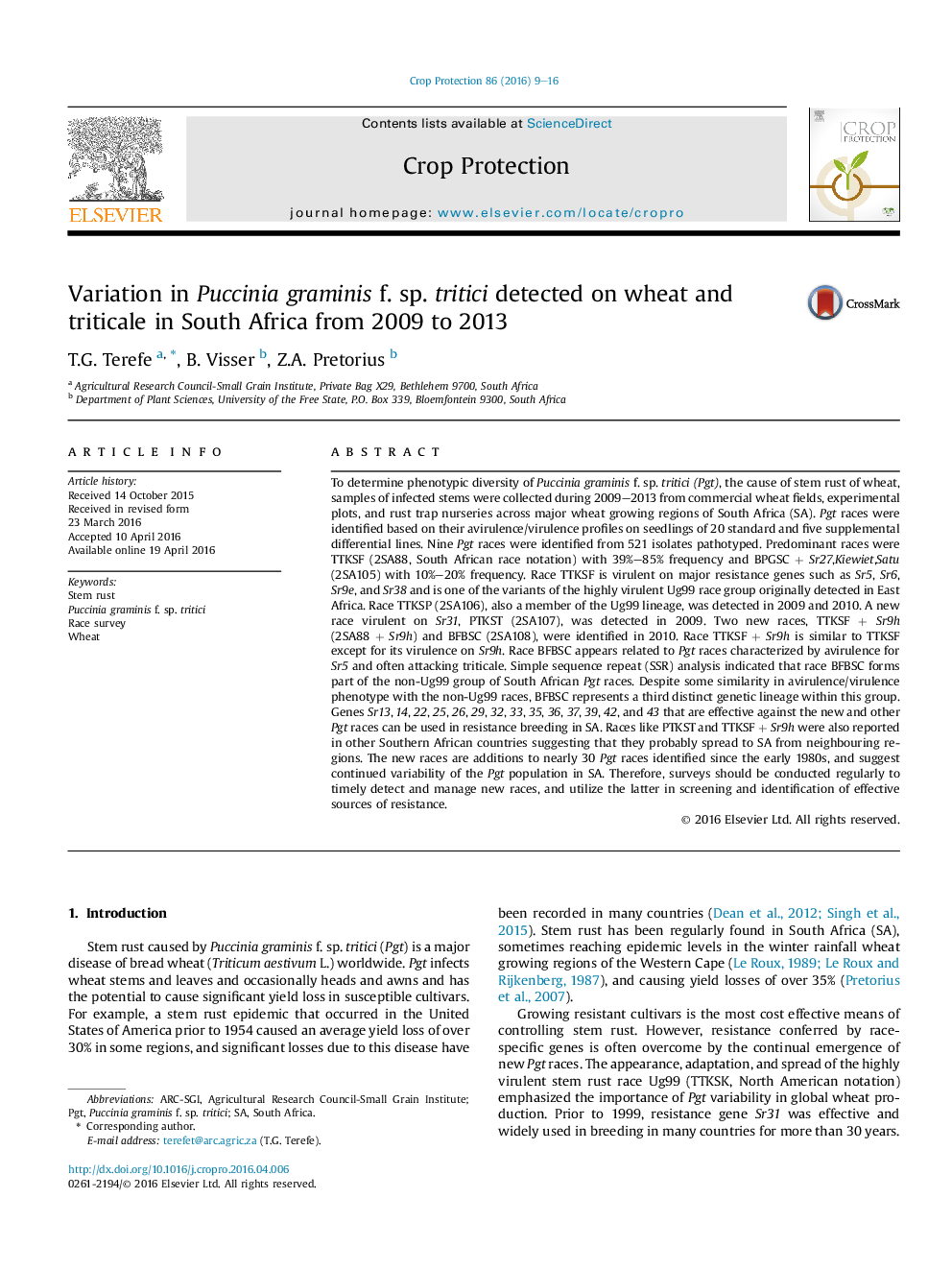| Article ID | Journal | Published Year | Pages | File Type |
|---|---|---|---|---|
| 6373325 | Crop Protection | 2016 | 8 Pages |
Abstract
To determine phenotypic diversity of Puccinia graminis f. sp. tritici (Pgt), the cause of stem rust of wheat, samples of infected stems were collected during 2009-2013 from commercial wheat fields, experimental plots, and rust trap nurseries across major wheat growing regions of South Africa (SA). Pgt races were identified based on their avirulence/virulence profiles on seedlings of 20 standard and five supplemental differential lines. Nine Pgt races were identified from 521 isolates pathotyped. Predominant races were TTKSF (2SA88, South African race notation) with 39%-85% frequency and BPGSCÂ +Â Sr27,Kiewiet,Satu (2SA105) with 10%-20% frequency. Race TTKSF is virulent on major resistance genes such as Sr5, Sr6, Sr9e, and Sr38 and is one of the variants of the highly virulent Ug99 race group originally detected in East Africa. Race TTKSP (2SA106), also a member of the Ug99 lineage, was detected in 2009 and 2010. A new race virulent on Sr31, PTKST (2SA107), was detected in 2009. Two new races, TTKSFÂ +Â Sr9h (2SA88Â +Â Sr9h) and BFBSC (2SA108), were identified in 2010. Race TTKSFÂ +Â Sr9h is similar to TTKSF except for its virulence on Sr9h. Race BFBSC appears related to Pgt races characterized by avirulence for Sr5 and often attacking triticale. Simple sequence repeat (SSR) analysis indicated that race BFBSC forms part of the non-Ug99 group of South African Pgt races. Despite some similarity in avirulence/virulence phenotype with the non-Ug99 races, BFBSC represents a third distinct genetic lineage within this group. Genes Sr13, 14, 22, 25, 26, 29, 32, 33, 35, 36, 37, 39, 42, and 43 that are effective against the new and other Pgt races can be used in resistance breeding in SA. Races like PTKST and TTKSFÂ +Â Sr9h were also reported in other Southern African countries suggesting that they probably spread to SA from neighbouring regions. The new races are additions to nearly 30 Pgt races identified since the early 1980s, and suggest continued variability of the Pgt population in SA. Therefore, surveys should be conducted regularly to timely detect and manage new races, and utilize the latter in screening and identification of effective sources of resistance.
Related Topics
Life Sciences
Agricultural and Biological Sciences
Agronomy and Crop Science
Authors
T.G. Terefe, B. Visser, Z.A. Pretorius,
